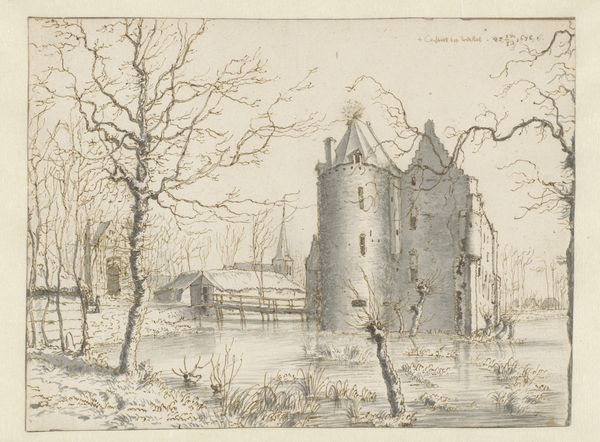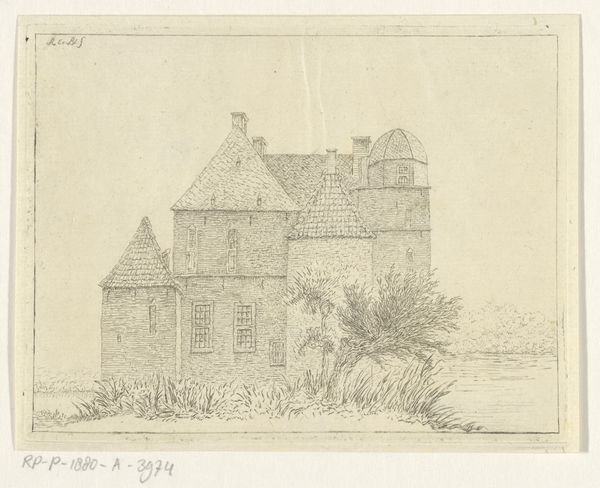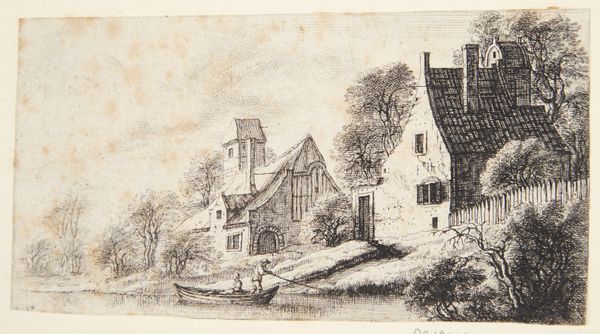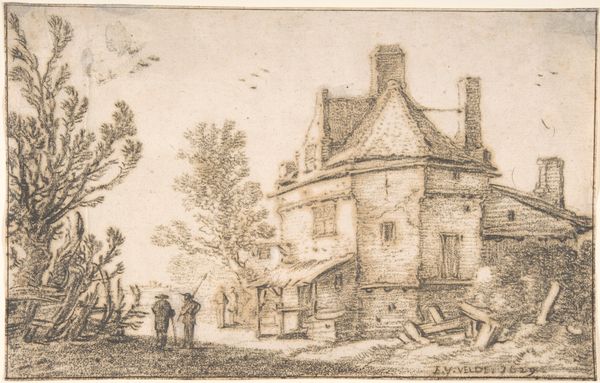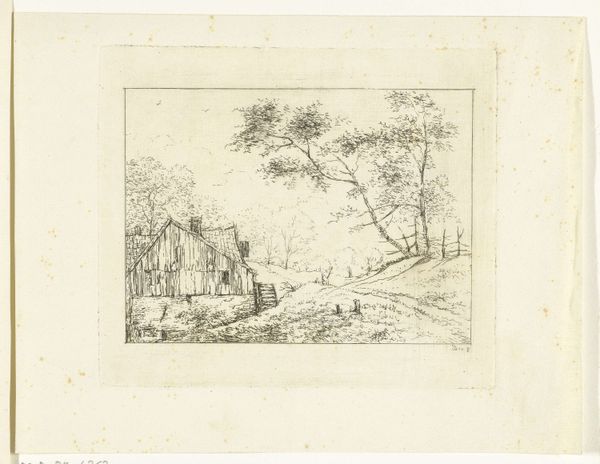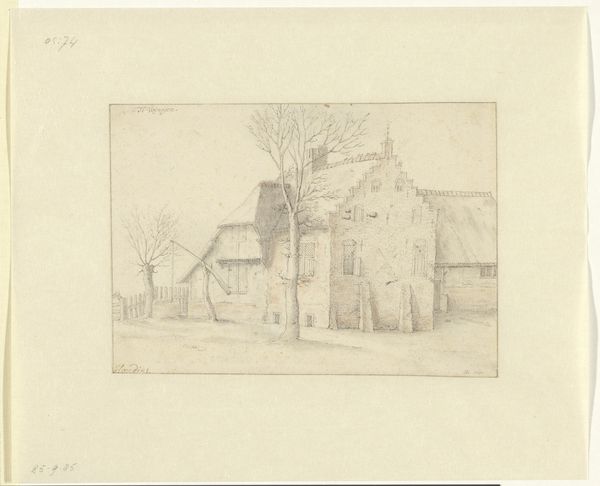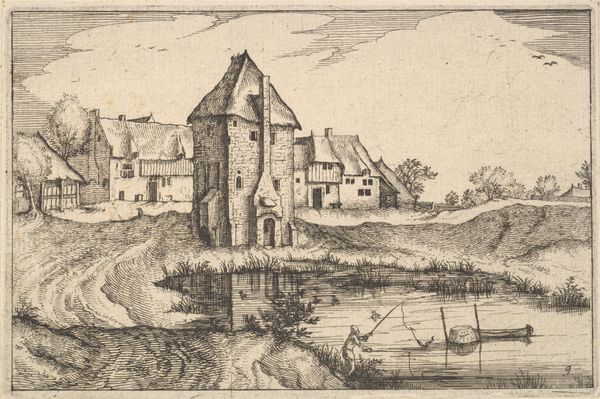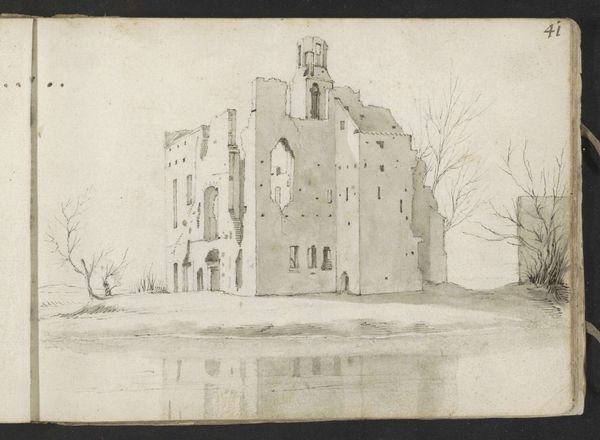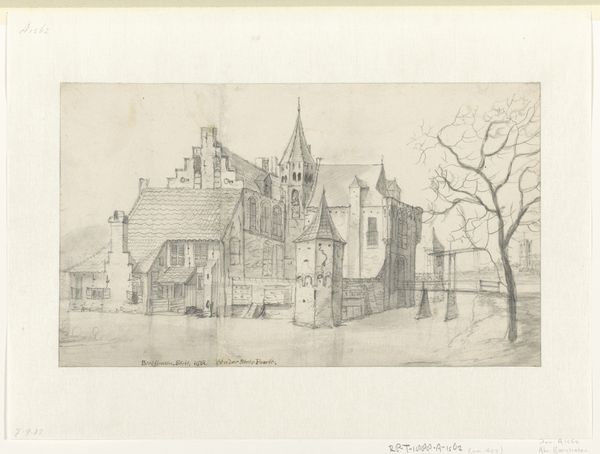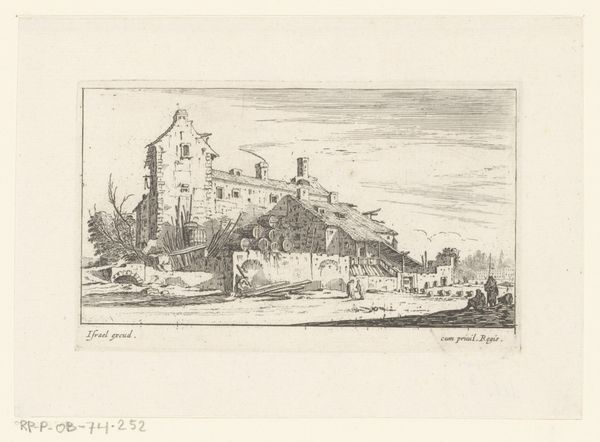
#
architectural sketch
#
landscape illustration sketch
#
aged paper
#
toned paper
#
mechanical pen drawing
#
pen sketch
#
pencil sketch
#
etching
#
personal sketchbook
#
pen-ink sketch
Dimensions: height 153 mm, width 210 mm
Copyright: Rijks Museum: Open Domain
Curator: This unassuming sketch of Kasteel Frisselstein, rendered with delicate pen strokes on aged paper, is attributed to Valentijn Klotz, and was possibly made in 1676. What's your immediate reaction? Editor: My initial impression is of quietude and isolation. The bare trees, the still water surrounding the imposing structure, it feels almost melancholic, like a fairytale castle slumbering in winter. Curator: Precisely. Klotz really captured the feeling of solitude that these moated castles often inspire, the detachment, not just physical, but historical and even spiritual, maybe. It is really compelling. What do you make of his technique? Editor: I find it intriguing how he's used the ink washes to suggest volume and light on the castle walls. The drawing gives us insight into 17th-century land ownership and class structures, these architectural marvels embodying the power of elite families and their deep connections to the land, right? Curator: Right. I think what strikes me most is that it really feels like a quickly executed field sketch—the sort of thing a wandering artist or nobleman might have captured in a personal sketchbook as a visual reminder of his place in the world. A souvenir from his travels through his holdings, so to speak. Editor: And look at how that historical positionality manifests within this seemingly objective landscape depiction. By framing this isolated and enclosed fortress within the rawness of nature, it raises questions about man’s control over the environment and the justification of this ownership. Curator: Absolutely, especially since, considering the timeframe, it seems unlikely the servants or inhabitants of the area would have had similar freedoms to capture such an image. One sketches the surroundings and the other has to live and cultivate it—two vastly different viewpoints shaped by privilege. Editor: Which emphasizes the crucial role artists play, often unknowingly, in recording both what is present and what is actively missing within society. In rendering the view, the act itself becomes laden with broader sociopolitical significance. Curator: I'll definitely ponder this image of Frisselstein differently from now on. So much power hidden in such a quiet, humble sketch. Editor: Exactly, and as it happens the seeds of change are often sewn in the quietest of moments. It feels rather pertinent today, don't you think?
Comments
No comments
Be the first to comment and join the conversation on the ultimate creative platform.
